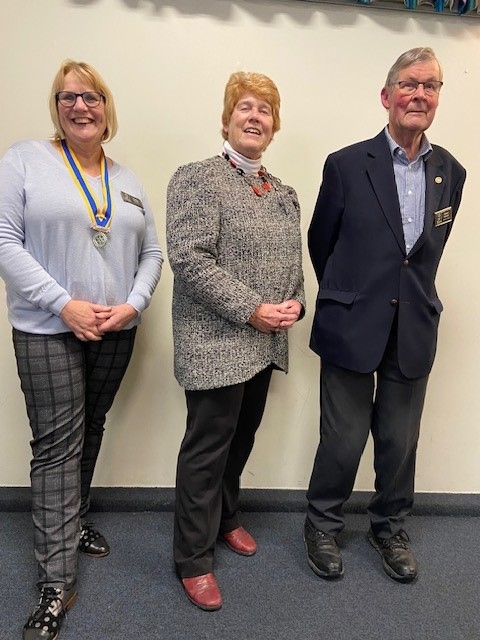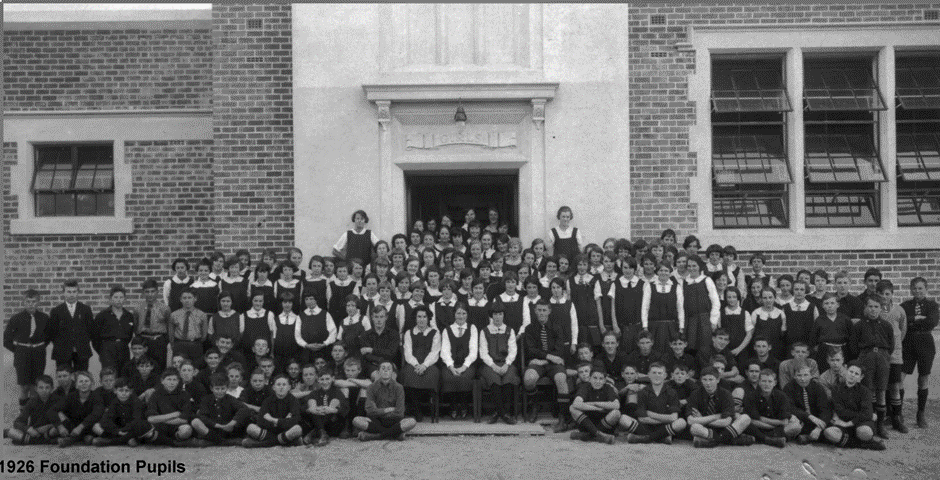
Hutt Valley High School has for many years been an important feature of Lower Hutt, and Judith Gardiner gave a brief but most interesting account of its history, with historical photographs. Judith is in a particularly good position to recount the history as she has completed a number of family histories, has been a teacher aide there for 22 years and is also the school's archivist.

In the early nineteenth century Lower Hutt had a District High School, but no secondary school. There was talk of one but nothing happened until February 1926 when the new Hutt Valley High School opened in the temporary premises of Petone Technical College as its buildings were not ready. Shortly after they moved into the new building, which had with the grounds, cost 24,300 pounds. The school opened with 169 students. Mr Harold Kidson was the first principal. At the opening the secretary of the Board of Governors said
" There is no reason why it should not rival the best schools in the Dominion, not only in the examination room and on the playing fields but in the turning out of good, useful and wise citizens". The school motto was "Ad Alta" and the emblem, the wings. At that stage the grounds were barren, stony and in places swampy. Staff and boys cleared the grounds in their lunch times and the girls organised the flowers. Garden fetes and concerts were held to raise money and tennis courts and sports fields were developed. The school survived during the depression: school attendance did not drop as it was important to families. The war affected the school, with many masters joining the forces. In 1939 1473 former students were eligible for war service. By the war's end 67 former students had been killed. Mr Kidson had been highly respected and when he retired Mr "Pasty" Millard became principal. He was a well-known sportsman and administrator (the Millard Stand at Athletic Park was named after him). It was said he knew the names of every student and would address them by name. When he retired he was followed by Mr "Stan" Ramson", a most imposing figure, always seen around school in an academic gown. He, like Mr Millard, valued academic achievement but also encouraged every student to play a sport. He himself would watch every team over the course of a season and would read and sign every one of the students' (by then 1200) reports. On one occasion a master had described a somewhat lazy boy as "languorous". Mr Ransom picked this up as unacceptable. When the master pointed out the word was in the dictionary with a main meaning of "inclined to be lazy" the principal pointed out the secondary meaning as "with sexual overtones"! The report was changed. Society was itself changing. The new principal was Ian McLean, much less formal in style. He was more up-to-date in many ways, although his Bible readings from the version titled "Jesus is for Real, Man" came as a shock for some. He successfully led the school through the tumultuous years of radical hair styles, anti-Vietnam protests and the Beatles. He even abolished corporal punishment. He was followed briefly by Peter Barlow who then went into the Department and then by Graeme Marshall, of whom it was also said that he knew, and had spoken to, every student, by then 1600. Responding to societal change new subjects like Photography, Media Studies, Dance and Computing were introduced. After Graeme Marshall left to go into the Department he was followed by Sylvia Burch, a former Dux of the school then Ross Sinclair who introduced Restorative Justice to replace the old system of detentions and stand-downs. Many were sceptical at first, but gradually the whole atmosphere changed and the school was able to cope with the new social problems appearing as NZ society changed from its old conservatism. After Ross Sinclair died Denise Johnston became, and still is Principal. Hutt Valley High School has always been proud of its academic and sporting achievements. Between 1935 and 1975 55 students won University Scholarships. Past pupils include a Nobel Prize winner, Alan MacDiamid, and public figures known today such as Tim Groser, Rob Campbell, Bruce Murray, Kerry Fox and Nick Willis. Currently it has 1800 students and, under Denise Johnson is still going strong.